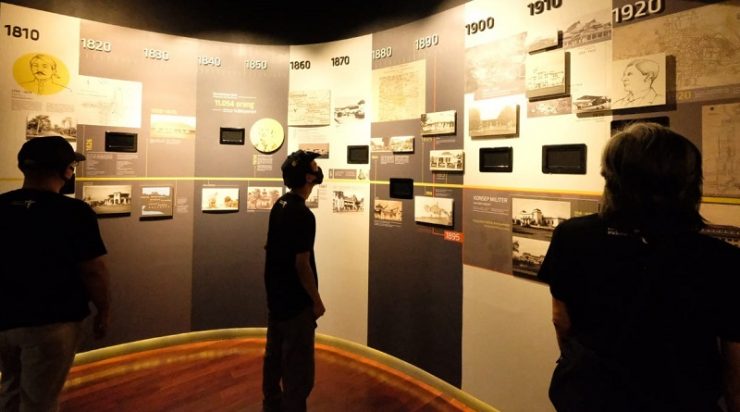GEDUNG Sate, formerly known as Gouvernements Bedrijven, is now 100 years old. Since 1980, the building has become the Office of the Governor of West Java.
The laying of the first stone for the construction of Gedung Sate itself was in 1920 when Indonesia was still colonized by the Dutch. Right on July 27, 2020, Gedung Sate celebrated its 100th anniversary.
“Gedung Sate is already 100 years old. From the literature, Gedung Sate has a long history, where its construction was a project of the Dutch East Indies Government to relocate the center of government from Batavia (Jakarta),” said the Head of the Tourism Industry, Provincial Tourism and Culture Office. West Java Azis Zulfikar in Bandung.
Gedung Sate is one of the buildings designed for the center of government, because at that time the Dutch East Indies would build an office complex. It is called Gedung Sate because this building has a unique characteristic, namely the 6 skewers ornament on top of the central tower. These 6 skewers symbolize the 6 million guilders used to build this white building during its time.
He continued, it was found that there were plans for the construction of the central government and the construction of Gedung Sate was originally planned to consist of 17 different buildings. However, due to the economic crisis in the first world war, only three buildings were able to be realized by the Dutch East Indies at that time.
“Gedung Sate will only be the beginning of the construction of the Dutch East Indies Central Government Complex to replace the role of Batavia. According to the master plan, 17 buildings will be built. Only three buildings were realized due to the economic crisis caused by the first world war,” he said.
Gedung Sate was built for four years starting from 1920 and was only used in 1924. For the construction architecture itself, it adopted all existing cultures, both from Europe, Asia and the archipelago, this is evidenced by the discovery of representative pillars.
For example, there are buildings that are shaped like mosques or Islamic nuances, there are also temples and buildings that have European nuances. In the east and west there are two large rooms that will remind you of the ball rooms that are often found in European buildings.
This room is more commonly known as the west hall and east hall, often used for official activities. At the top there is a floor called Menara Gedung Sate, this floor cannot be seen from below, to go to the top floor using an elevator or by climbing wooden stairs.
The majestic perfection of Gedung Sate is complemented by the New Building which takes a bit of the Gedung Sate architectural style but with a contextual style created by the architect Ir. Sudibyo, which was built in 1977, is intended for the Leaders and Members of the Regional Representative Council of West Java Province in carrying out their duties and functions as a regional legislative body.
Tourist destinations
Gedung Sate has become one of the tourist destinations in the city of Bandung. Especially for foreign tourists, many of them deliberately visit because they have emotional and historical links to this building.
This emotional and historical connection may feel more complete if you climb the available steps one by one to the Gedung Sate tower. There are 6 stairs that must be passed with 10 steps each that must be climbed.
Zulfikar added, starting in 2020 Gedung Sate was opened to the public, especially on weekends and became one of the tourist destinations. People can also trace the historical traces of West Java by presenting an experienced “tour guide” at the Gedung Sate Museum.
Now, by only paying IDR5,000, tourists can learn more closely the history of the construction of Gedung Sate at the Gedung Sate Museum in a comprehensive and digital approach.
According to the plan, said Azis, the Gedung Sate Complex will continue to be developed as a pedestrian-friendly tourist destination with pedestrian development until it reaches the Juang Monument.
“Hopefully this can attract more attention of visiting tourists, because Gedung Sate is very appropriate to become the tourism center point of Bandung City,” he said.
And in the context of the New Habit Adaptation period, Gedung Sate also implements strict health protocols as part of an effort to realize safe and comfortable tourism in West Java Province.
“But for now we are still closed to the public, after an employee here has been exposed to COVID-19,” he said.
For a long time, this building was very well known not only in the city of Bandung, but also in West Java and Indonesia. Not only the building is very popular, but also the complementary element of the building is a garden that is very well maintained.
The building which is touted as the “White House of Bandung” has now become one of the tourist attractions in Bandung. The park around Gedung Sate is a favorite location for photo-taking tourists, whether it’s regular photos for souvenirs or photos for brides and shooting for films. [traveltext.id]
















